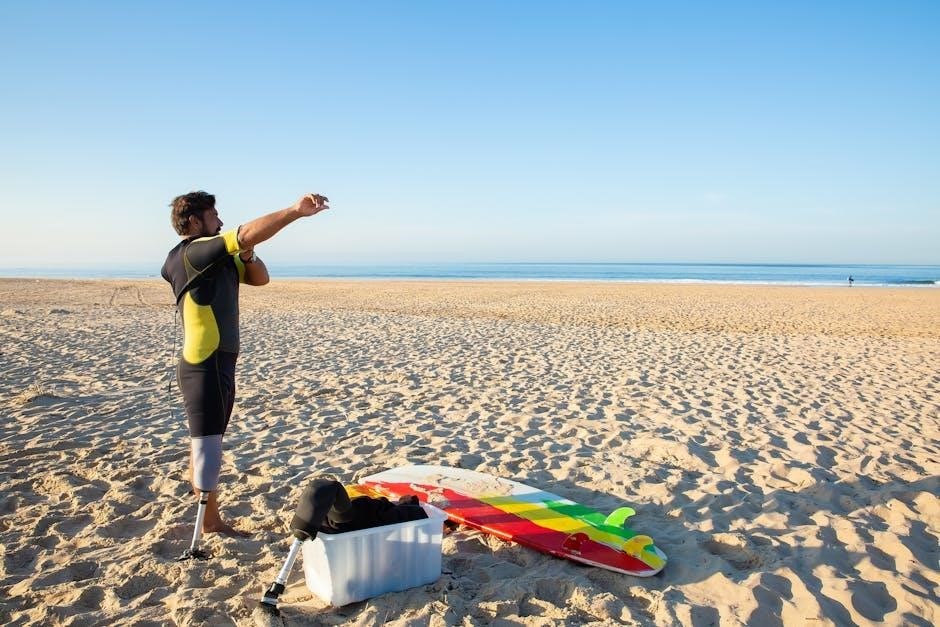Importance of Choosing the Right Surfboard Size
Choosing the right surfboard size is extremely important for surfers of all levels, as it can greatly affect their performance and overall experience in the water. A surfboard that is too small may not provide enough buoyancy, making it difficult to catch waves and stay afloat, while a surfboard that is too large may be cumbersome and hard to maneuver. According to experts, having the right surfboard size for your ability and needs! is crucial, and using a basic surfboard size guide or chart can provide a good starting point. However, it is also important to consider other factors, such as the volume of the board, which will determine its buoyancy. By choosing the right surfboard size, surfers can improve their balance, stability, and overall surfing ability, making the sport more enjoyable and rewarding. With so many different types of surfboards available, it can be overwhelming to choose the right one, but with the right guidance and expertise, surfers can find the perfect board to suit their needs. Proper sizing is essential for a successful surfing experience.
Factors to Consider When Selecting a Surfboard
Surfboard selection involves considering several key factors always, including experience level, surfing style, and personal preference, to ensure the best possible match for a successful surfing experience every time with optimal performance.
Volume of the Surfboard
The volume of a surfboard is a critical factor in determining its performance and suitability for a particular surfer. It is calculated by multiplying the length, width, and thickness of the board together, and is typically measured in liters. A higher volume board will provide more buoyancy and stability, making it easier to catch waves and stay afloat, while a lower volume board will be more sensitive and responsive to the surfer’s movements. The ideal volume for a surfboard will depend on the surfer’s weight, skill level, and personal preference, as well as the type of waves they will be surfing. For example, a beginner surfer may prefer a higher volume board to help them stay afloat and catch waves more easily, while an experienced surfer may prefer a lower volume board to allow for more precise control and maneuverability. By considering the volume of a surfboard, surfers can choose a board that is well-suited to their needs and abilities, and enjoy a more rewarding and enjoyable surfing experience. The volume of the surfboard is an important consideration for surfers of all levels.

Surfboard Size Guide
A surfboard size guide provides general recommendations for length and width based on surfer height and weight always considering volume and performance characteristics effectively.
Using Weight to Determine Surfboard Length
When it comes to determining surfboard length, a surfer’s weight is a crucial factor to consider, as it affects the board’s buoyancy and performance in the water. A general rule of thumb is that a surfer’s weight will determine the volume of the board they need, with heavier surfers requiring more volume and lighter surfers requiring less. This is because a board with more volume will be able to support the weight of a heavier surfer, while a board with less volume will be more suitable for a lighter surfer. By using a surfer’s weight to determine the ideal surfboard length, surfers can ensure that they are riding a board that is well-suited to their needs and abilities. This can help to improve their overall surfing experience and make it easier for them to catch and ride waves. Additionally, considering a surfer’s weight when choosing a surfboard can also help to prevent injuries and improve their overall safety in the water. Surfers can use tables and charts to determine the ideal surfboard length based on their weight, and can also consult with experts at surf shops to get a more personalized recommendation. Overall, using weight to determine surfboard length is an important part of finding the right board and improving surfing performance. Surfers should take the time to consider their weight and how it affects their surfboard needs.

Types of Surfboards
Surfboards come in various types, including shortboards, funboards, and softboards, each with unique characteristics and uses, suitable for different surfing styles and levels of experience, with varying lengths and widths always.
Longboards for Beginners
Longboards are often recommended for beginners due to their stability and ease of use, making it easier for new surfers to catch and ride waves. The length and width of a longboard provide a larger surface area, allowing for more buoyancy and balance in the water. This makes it ideal for learning the basics of surfing, such as paddling, popping up, and balancing. Additionally, longboards are typically softer and more forgiving, reducing the risk of injury from wipeouts. Many surf schools and instructors use longboards to teach beginners, as they are more stable and easier to handle. Longboards also come in various sizes, with some designed specifically for beginners, and can be used in a variety of wave conditions, from small waves to larger ones. Overall, longboards are an excellent choice for those just starting out with surfing, providing a fun and gentle learning experience. With the right longboard, beginners can quickly progress and develop their skills, eventually moving on to more advanced boards and techniques. Longboards are a great way to introduce people to the sport of surfing, and their stability and ease of use make them an excellent choice for beginners.